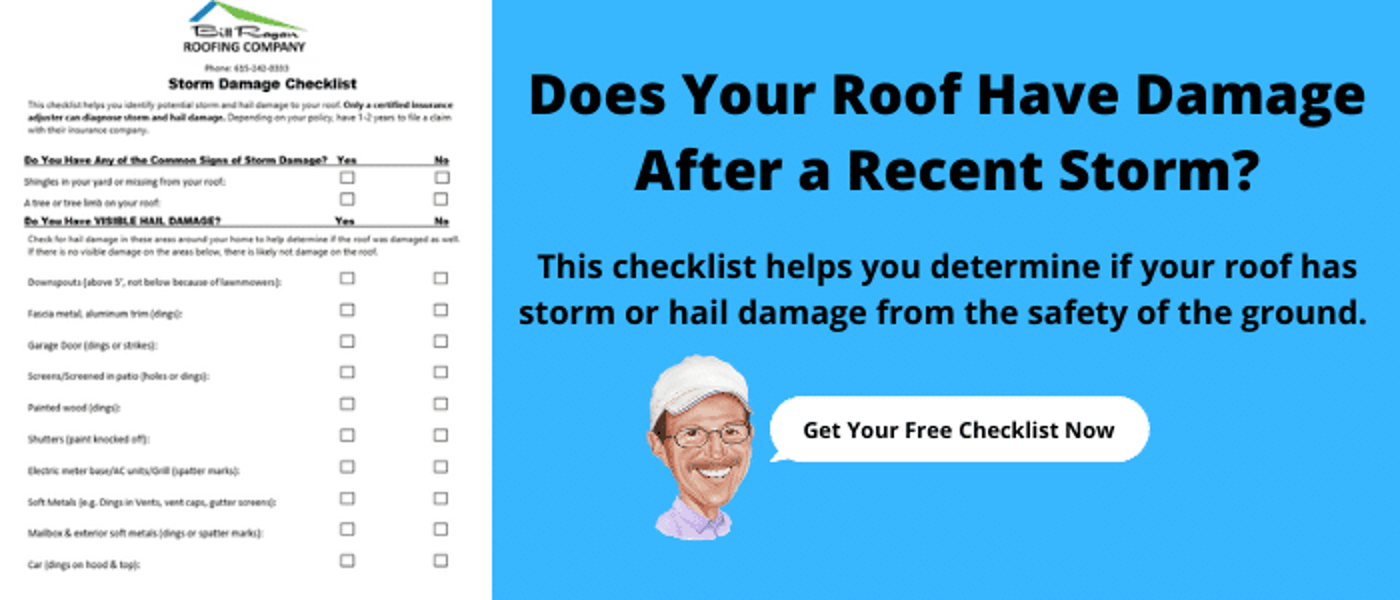How Do I Spot Storm Damage to My Roof?
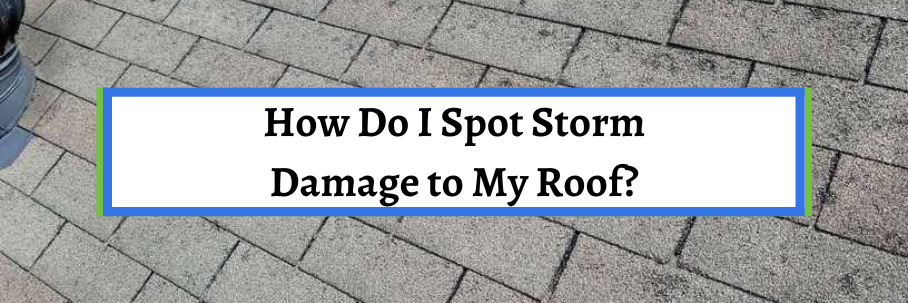
No homeowner wants to experience storm damage to their roof. This could lead to roof leaks or, in most cases, a full roof replacement.
Unfortunately, most homeowners don’t know they actually have storm damage until it’s too late. Especially since it’s hard to spot storm damage to a roof if you don’t know what to look for.
I want to give you the power to change that.
For over 30 years, the team at Bill Ragan Roofing has helped homeowners understand how storm damage and insurance impacts their roof. Now I’ll help you spot storm damage to your roof.
This article covers the following signs of storm damage to a roof and how to spot them:
- Storm damage to objects at the ground level.
- Loose granules on the ground or in your gutters.
- Damage to shingles.
- Dents in roof flashing, roof vents, and shingles.
- Large tree limbs on your roof.
Storm damage to objects at the ground level
The first way to spot storm damage to your roof is by looking for collateral damage to objects at the ground level. One of the easiest ways to do this is by looking at the face of your gutters and downspouts.
Dents on the face of your gutters are a pretty good indication that your roof may have damage as well. Downspouts are also a pretty good indicator, but the dents need to be above 5 feet, so it can’t be blamed on anything else.
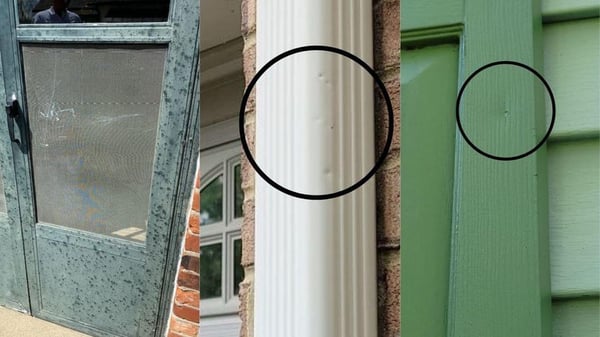
While dents on gutters and downspouts are signs that you have possible roof damage, so can collateral damage to other objects. Below is a list of what else you should check on the ground level:
- Dents or strikes on your garage door
- Holes in your window screens
- Dings to any painted wood or shutters
- Spatter marks or dings to your electric meter, AC unit, or grill
- Dents to your mailbox and other soft metals on your property
Just know that it’s not 100% guaranteed that you have roof damage because collateral damage is found. However, there's a good chance your roof has damage if you find any of the above.
Loose granules on the ground or in your gutters
Granules are pieces of asphalt embedded into shingles to make them fire-resistant, give them their color, and protect them from UV rays. They are crucial to your roof’s lifespan, and losing them is a clear sign that it’s time for a roof replacement.
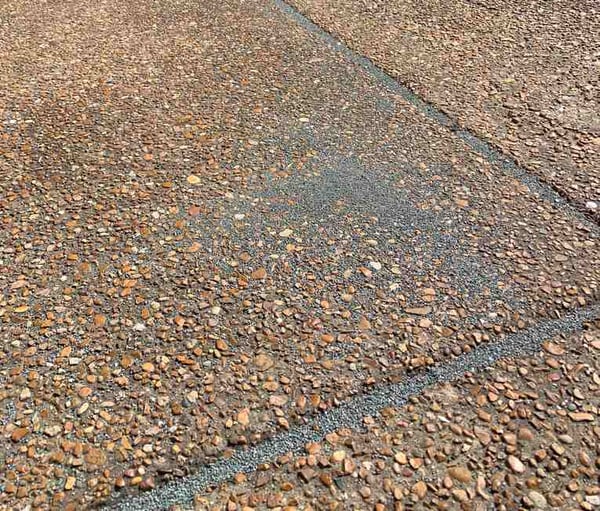
However, finding loose granules in your gutters or on the ground after a hail storm is a way to spot storm damage. If the hail was strong enough to warrant granule loss, the integrity of your shingles is definitely compromised.
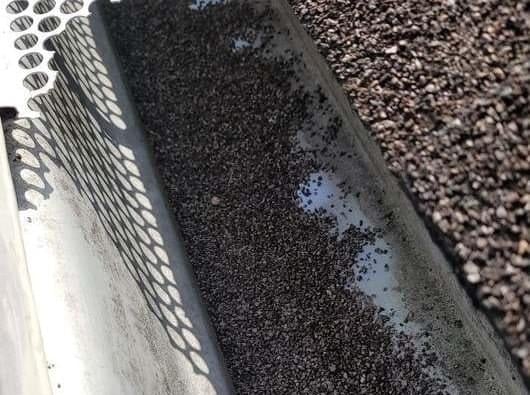
To spot this, look in areas on the ground around your downspouts for loose granules. Remember, granule loss also happens as a roof ages and is a definite sign you need a new roof.
So, there’s a chance you’ll find loose granules if you have an older roof that’s telling you it’s time for a replacement. However, you won’t really know the real reason until after a roof inspection from a local roofing contractor.
Damage to shingles
The first couple of ways to spot storm damage was on the ground level, but now we’re getting to things actually on your roof. One of the easiest (and most common ways) to spot storm damage to your roof is by seeing missing, lifted, or creased shingles.
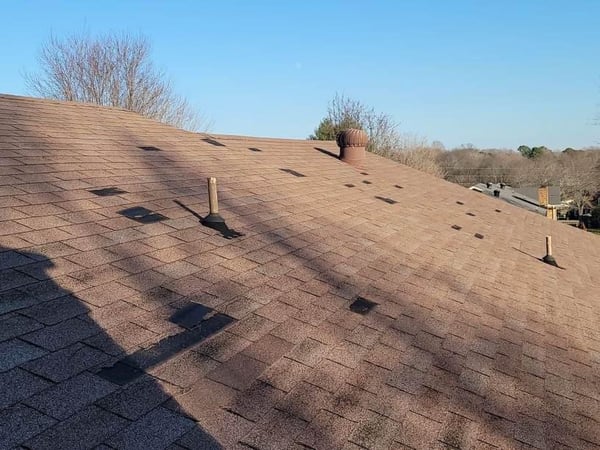
Finding missing shingles in your yard is probably the most obvious sign of storm damage. But you'll need to be on the roof to find lifted or creased shingles.
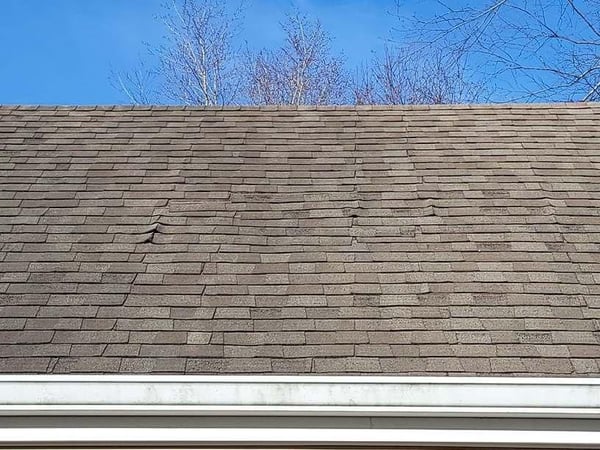
Unfortunately, this type of storm damage could also be a sign of improper installation. If the roofing contractor didn’t do the job right, you’re more likely to experience this type of storm damage when strong winds blow into your area.
What makes this even worse is that you can’t file an insurance claim because improper installation isn’t covered by homeowners insurance policies.
Dents in roof flashing, roof vents, and shingles
This next one is probably the hardest to spot if you don’t know what to look for. To spot storm damage from hail, you should look for dents or bruises large enough (around 1” in diameter) to damage the shingles.
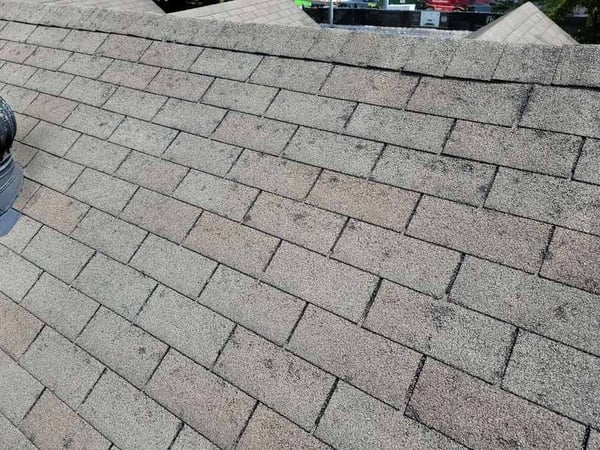
This damage is enough to cause the granule loss we talked about earlier and means the integrity of your roof is compromised. Other than your shingles, you can look at other areas of your roof for possible damage.
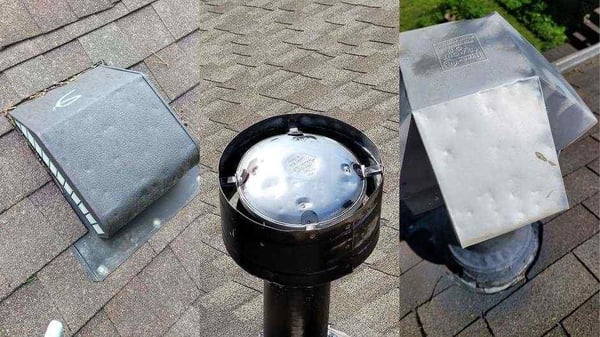
Just like looking for collateral damage on the ground, check roof vents, roof flashing, or any other metal on your roof for dents that clearly show signs of hail damage. If the hail was strong enough to dent your roof vents or any metal, you’ll definitely have storm damage to other areas of your roof.
Large tree limbs on your roof
Along with finding shingles on the ground, the last one on our list is pretty obvious. This is finding large tree limbs on your roof after a storm.
If a large tree limb or an entire tree hits your roof, then it’s pretty obvious that your roof is damaged. While it’ll cause damage to your shingles, it also causes damage to your roof decking and other roofing components if the tree limb is large and heavy enough.
To avoid this happening, it’s important to keep any trees around your roof trimmed. But if a storm is strong enough, you can’t do much about a falling branch or tree.
Learn the insurance claim process for a storm-damaged roof
Now you know what to look for to spot storm damage to your roof. While I recommend walking around your property looking for these signs, I don’t recommend risking your safety to get on your roof.
As soon as you notice or think your roof has storm damage, contact your insurance company to start the claim process. But just know that you’re about to embark on a long and confusing process.
To help you understand what you’re getting into and how it actually works, I wrote another article breaking down the insurance claim process for roof damage.
The team at Bill Ragan Roofing has guided thousands of homeowners in Nashville and surrounding Middle Tennessee areas through the insurance process since 1990. We work with you to ensure you get everything your roof needs according to your insurance policy.
Check out Homeowners insurance: The process to replace a storm damaged roof to learn what happens when you file a claim for storm damage.


